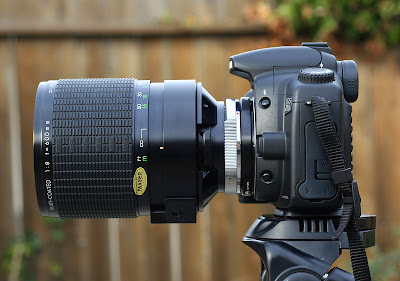
The first half of this review is here with a follow-up here. I recommend reading those first.
This is the second half of my Sigma 600mm f/8 Mirror lens review. In the first, I focused on the physical characteristics and the ideal performance of the lens. In this part, I'll focus on how the lens performs in the field. And, as before, I'll start with my:
Conclusions:
- The Sigma 600mm f/8 does have substantially better image quality than an up -sampled Canon 70-200mm f/4, but only if conditions are perfect.
- The lens has high build quality but it is still a mirror lens with mirror lens limitations.
- It is VERY hard to get decent pictures out of the lens since it has narrow depth of field, is very sensitive to camera shake with an equivalent focal length of 1000mm (even on a tripod), and is relatively slow (f/8). Expect to do a lot of shooting at ISO 400+ and expect to toss a lot of soft images.
- If you are strapped for cash but need the reach and you can get a Sigma 600mm for $150 or less (in a mount that fits your camera or can be adapted to your camera), do it.
Yet, oddly enough, I've had a lot of fun using it.
The primary reason for my enjoyment is that I can actually see details through the camera way better than with my naked eye (that may be partially due to my declining vision, but that's another post altogether). With a 1000mm effective focal length, my 20D and Sigma act as a 20x spotting scope. And, yeah, the manual focus takes some getting used to, but once I had more practice with it, I got pretty good at rapidly snapping things into decent focus. The focus wheel has great feel to it making focusing relatively easy.
So, that all said, let me go into some more details. I'll start with mirror lens limitations, which apply to any mirror lens, not just the Sigma 600mm f/8 (arguably one of the better mirror lenses out there). Then, I'll talk about the handling issues and my personal guidelines when I want to get a shot, and sprinkle in a lot of example shots all through the post. As always, click the images to see them larger.
Mirror Lens Limitations:
Mirror lenses are generally shorter, lighter, and less expensive than the equivalent refractive lens. Yet, mirror (or reflex, or catadioptric) lenses suffer from most (if not all) of the following limitations:
- Fixed Aperture: Catadioptric lenses, by their very construction, cannot provide aperture control (to my knowledge; correct me if I'm wrong). The lens works by reflecting light from the outer donut mirror, off the front mirror, and then through a few refractive elements. I've heard of fixed apertures as large as f/4 and as small as f/13, but most fall in the f/5.6-f/8 range for 500mm lenses. Either way, a fixed aperture restricts your photographic options. The standard compromise of f/8 results in a pretty slow lens (using ISO 100 is difficult even in bright sunlight without a excellent tripod) yet a narrow depth of field for longer focal lengths (i.e. 300mm+). And, you have no way of adjusting to changing conditions.
- Donut-shaped Bokeh: Bokeh is the appearance of bright (or dark) artifacts due to out of focus highlights. If a point light source is out of focus, it will appear on the image as a bright circle (or polygon). The bokeh on a catadioptric lens is not circular; it is donut-shaped. Turns out, donuts are very distracting to the eye because they have a lot of edges involved with them. Of all the mirror lens problems, this one annoys me the most.
- Low Contrast: Catadioptric lenses tend to have lower contrast because of the path the light takes. In the modern digital age though, this is less of an issue because you can easily clean up the problem in Photoshop later.
- No Auto Focus: There are a few reflex lenses that do autofocus, but most don't. In this modern world of auto-everything, lack of auto focus can really make it much harder to shoot images in fast situations. Likewise, newer cameras no longer come with focusing screens suited to manual focus, making the task that much harder.
Fixed Aperture: Keep Your Shutter Speed Up
As mentioned in the previous review, the Sigma 600mm has an effective focal length around 1000mm. By the usual shutter speed = 1/focal length rule, that'd mean I should get a substantial number of keepers at 1/1000sec. I've found in practice that I actually need to go a bit beyond that to get reliable shake-free images (around 1/2000s works pretty well). Even when I look through the viewfinder, it looks like one of those across the field shots in an NFL playoff when one of the team scores: shaking all over the place.

Fixed Aperture and No Auto-focus: Focusing is hard!
Depth of field narrows as your aperture widens, your focal length gets longer, and/or your subject gets closer. On a 600mm lens, an aperture of f/8 turns out to be really, really narrow. For example, in the shot of the bird above, look at the focus on the fence. The reasonable depth of field is only a few centimeters, barely enough room to get the bird's face in focus. Obviously, your focus needs to be right on to get a shot.
If focus is a little off, you get an image like this:
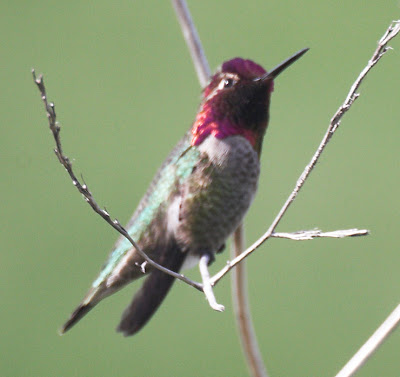 A great shot, except focus is a few centimeters too close. Darn.
A great shot, except focus is a few centimeters too close. Darn.This wouldn't be too bad, except you don't even have auto-focus to help you. I've found with my 20D's viewscreen I can nail the focus if I take my time (a few seconds) and take a few shots. The problem is, for fast-moving subjects, you rarely have more than a second to get the focus.

Donut-shaped Bokeh:
Mirror lens bokeh is the number one reason I'll be planning on upgrading as soon as I can.
A great (or really bad) example is the shot of the Great Blue Heron above. He (she?) was backlit and you can see how distracting the ring highlights are. To get any sort of decent image, you need to keep your foreground and background clean and uniform; this is typical for any photography, but a catadioptric lens makes any background clutter super distracting, even if it is just fine textures (like the image below).
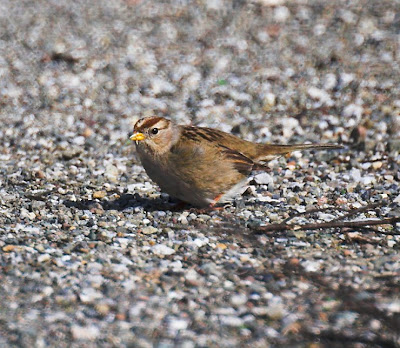
Even lines like the branches below get hollowed out and distracting!
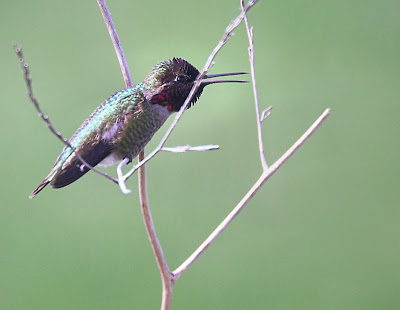
In comparison, here is a shot from the Canon 70-200 f/4. Note how the bokeh is there, but not distracting.

Also: Keep Your ISOs Up!
I don't think I've ever taken a shot with the Sigma at ISO 100 except for the testing images where I used a flash. And, while I'm looking into a Better Beamer or the equivalent, even flash isn't very useful when your subject is very far away. Most of my shots are at ISO 400 or ISO 800. Beyond that, noise gets really bad.
The good news is that the noise (which usually decreases the effective resolution of the camera once you've run noise reduction) has less of an effect when the lens already is already on the soft side. The end result is I feel like I can get 2-4MP images out of the 20D + Sigma instead of 8MP, but that's an ok compromise considering the cost.

Handling: Not Bad
During most of my shooting with the Sigma 600mm f/8 Reflex, my camera looked like the image above. I pretty much always keep the hood on it (for protection more than anything else, but also to avoid any image flare). While it looks massive, the lens itself ends where the hood starts, and the overall assembly is easy to carry around and aim.
I've had a lot better luck with the lens on a tripod, mostly because it lets me lower the ISO a stop along with lowering the shutter speed to around 1/500s (about a 2-3 stop difference). I tend to screw the tripod into the camera since the camera is a little too heavy to properly balance when I screw it into the lens. Also, I can't seem to get my tripod plate to attach firmly to the Sigma, but I expect that is probably just my cheap tripod!
When I shoot, I try to snug the camera as firmly as against my face (using the eyecup) as possible and drape my hand over the lens to steady it. That's a little more complicated when I need one hand to operate the camera and a second to focus the lens. But it works out pretty well. I've used the tripod as a monopod with some success; a monopod is on my short list of things to acquire in the near future.
Attaching and detaching it from the camera isn't hard, but it isn't as easy as the EF mount (it is an older FD mount with breech-lock action. For some reason I always try to turn it the wrong way which is probably why the base of the lens got loose.
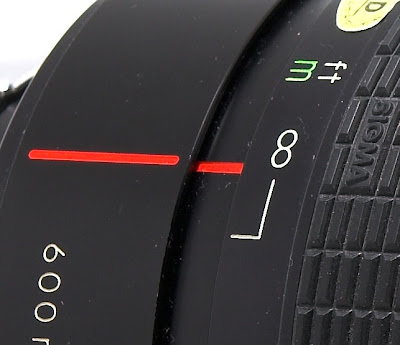 Also, I should mention I always shoot with the FD/EOS converter without the optical element. It turns out, since the Sigma 600mm f/8 focuses well-past infinity, I can get it to focus almost to infinity without the glass installed. By my estimation, this gives me maximum focus around a kilometer! I've been able to focus on planes traveling overhead with no problem... And why add another element to the optical path?
Also, I should mention I always shoot with the FD/EOS converter without the optical element. It turns out, since the Sigma 600mm f/8 focuses well-past infinity, I can get it to focus almost to infinity without the glass installed. By my estimation, this gives me maximum focus around a kilometer! I've been able to focus on planes traveling overhead with no problem... And why add another element to the optical path?Once you get to know the lens and it's quirks, it really is a lot of fun to use!
A Few (Good) Images
I'll leave you with some of my better images from the past few weeks that haven't been posted on the blog yet.

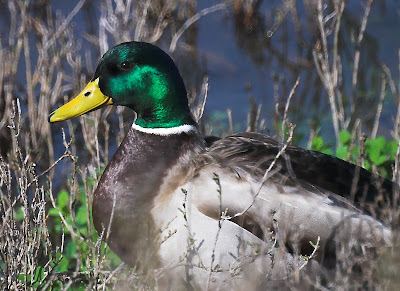
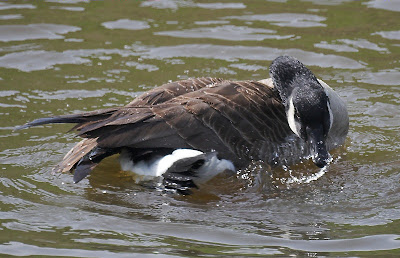
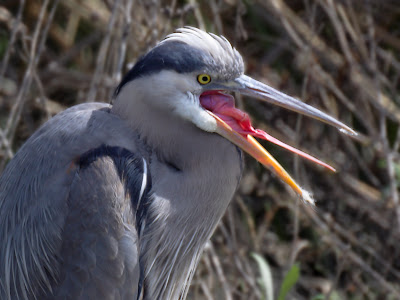
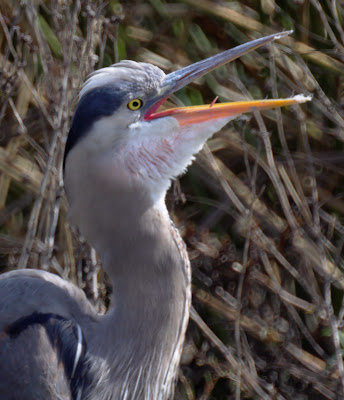
If you'd like to see more images, check out Jacob's shots (including a nice shot of a sparrowhawk).
Hi, one of the best sigma 600 reviews I've read so far. I ordered one a while ago and am waiting for it to arrive (any day now, for my sony A100). I'm really looking forward to the 'fun' as you call it. I read most people use A priority mode, did you try S? P? M... I've heard of people PS'ing those donuts out, but I think there'll be a donut revival just around the corner...
ReplyDeleteThanks Francisco. That was my goal: I feel like there aren't any really comprehensive Sigma 600mm reviews out there, so I figured I could make one. It is a quirky lens, but has the capability to give you some unique images.
ReplyDeleteI pretty much only use it in Aperture priority mode (and I think P mode would be identical). I'll adjust the ISO to the light conditions and my needed shutter speed (approximately). If you shoot RAW, you could also use M mode (or S, should be the same) and set your minimum shutter speed. Then, it'd be easy to adjust up or down a stop (with the corresponding noise hit) and you'd guarantee a fast enough shutter speed (key to getting good pictures).
As for the donuts, I've been wracking my brain to think of a time they'd look nice, and really haven't :) I do think you could have an automated filter remove them, but I don't think there's enough economic motivation to create it.
Good luck, enjoy your lens!
Hello. This post is likeable, and your blog is very interesting, congratulations :-). I will add in my blogroll =). If possible gives a last there on my blog, it is about the Monitor de LCD, I hope you enjoy. The address is http://monitor-de-lcd.blogspot.com. A hug.
ReplyDeleteHi Sean,
ReplyDeleteGreat review of this lens. It's really a mysterious beast, not many people bother to use mirror lenses anymore. I've just ordered one and I'm planning to modify the mount to Canon EF... is it true that the mounts are generally just held on with four screws? If so can I just take off the existing mount and screw in a new one, say from an old M42 adapter? I guess what I'm really asking is if you can post some pictures of the mount itself! Again, kudos on the review... I don't think there's a more complete one out there, and it really inspired me to get a sigma 600mm of my own.
Thanks!!
-Christian
Christian,
ReplyDeleteThanks for the complements.
I can't speak too much to the ease of replacing the mount. The part I removed included the final refractive lens so it'd be difficult to replace it with another part. There are 3 small screws on the back of the FD mount which, I suspect, might allow you to swap out the mount.
Honestly, my opinion when converting to EF is to just get the FD-EF adapter I mentioned earlier. Yes, you can't focus to infinity any more, but mirror lenses always go a decent distance past infinity (something about the design) so in reality I could get it to focus to at least a half a mile out. And the corrective lens can get you infinity focus if you are willing to give up a little optical quality.
Unless you need to take a lot of shots of very far away objects all the time (or really enjoy machining), I'd just get the FD-EF adapter with the removable optical element. It will save you a lot of time and cost in the long run.
I have owned one of these lenses for many years and I agree with what you have to say. One thing, I do have the instructions and it says never to use the lens w/o one of the filters in place, so I never have used it w/o a filter. I do mostly B&W film.
ReplyDeleteInteresting. I've never seen the manual, so I wonder why they'd always say to keep the filter in place. From what I could tell, it was just flat glass, but maybe it prevents some light leaks or internal scatter.
ReplyDeleteThanks for the info!
ha, I will test my thought, your post get me some good ideas, it's really awesome, thanks.
ReplyDelete- Thomas
nice review, but I wonder why you don't mount it on the lens based tripod collar?
ReplyDeleteThat would ease up the shake an amount too.
:-)
Hi, do you mind if I make an observation? You are mounting the kit on the tripod by the camera body, there is a tripod socket on the lens, which should let you shoot at lower shutters as the lens isn't being shaken about by the reflex mirror etc.
ReplyDeleteI'm sure you could shoot at the 1/focal length by using the tripod mount on the lens as your whole set up should be a lot steadier.
hi,
ReplyDeletefor christmas my friend give me a sigma 600 mm f8 but i don't know which kind of connection i have to use.
I have a canon eos EF connection. but i have seen that the sigma is smoller than the connection on the body of the canon. the kind of connection of the sigma is the same but the diameter is smaller
what sigma is that?
witch kind of adaptor i have to buy?
thank you
bye